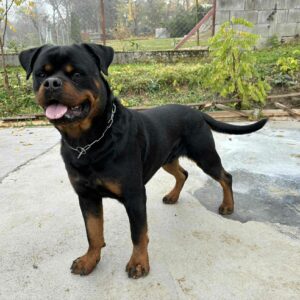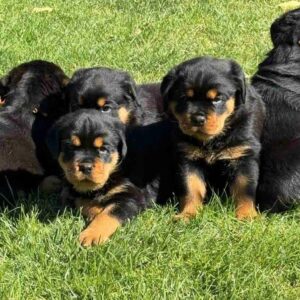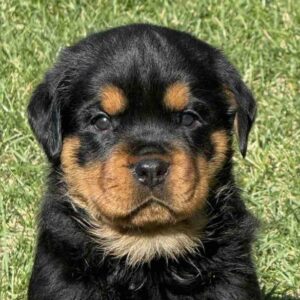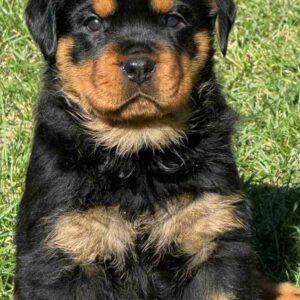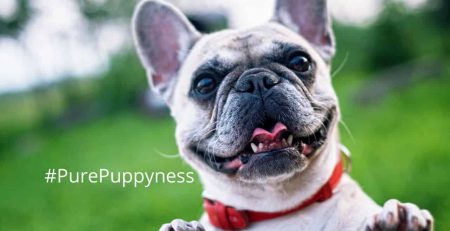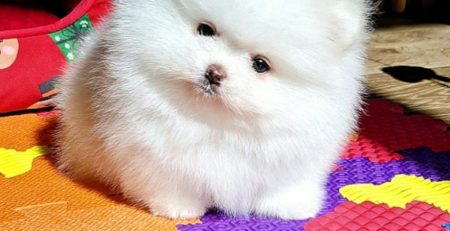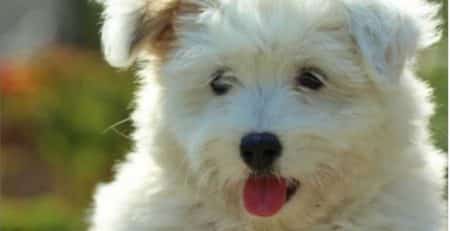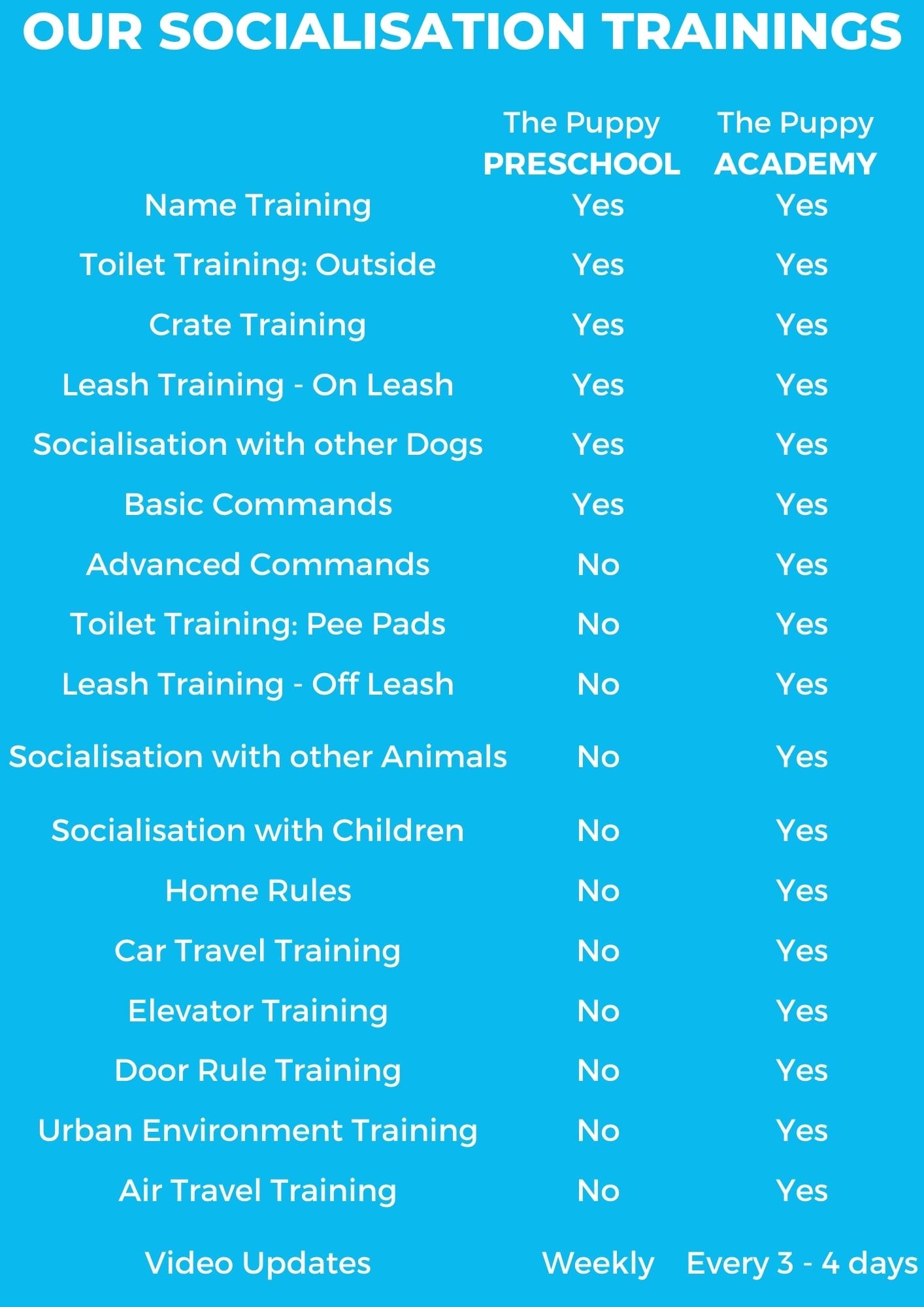History of the Rottweiler
The Rottweiler: big and muscular, imposing yet calm. This dog looks like a typical guard dog that should be sitting in a yard wearing a spiked collar and barking at strangers. However, the Rottweiler has a very interesting history. While they are sometimes used as guard dogs, they are much more versatile than you might expect.
A Butcher’s Dog
The Rottweiler’s ancestor was the Molossus. This ancient breed resembled a mastiff, and was a Roman dog used to drive cattle. In later years, in the town of Das Rote Wil (later called Rottweiler) in Wurttemberg, descendent of the Molossus dogs continued to drive cattle into town for butchering. The cattlemen who owned these dogs trusted them so much that they would put their purses, full to the brim with coins, around their dogs’ necks to keep their earnings safe.
In the Middle Ages, the ancestors of the Rottweiler were in demand. They were herders, guard dogs, and messengers. Butchers from the Rottweiler area also used the dogs to pull carts loaded high with meat.
With the Industrial Revolution and the development of the railway, there was no more need for cattle drives. Cattle could be transported by rail more quickly. The Rottweiler dog was out of a job, and came close to dying out.
Revival
Luckily, in 19th century Europe there was a great fascination with dog breeding. The Rottweiler and Leonberger Club was founded in 1901, and an official breed standard was created. Rottweilers were used as police dogs. In the 1920s, Rottweilers were introduced to the USA, and the first American Rottweiler was registered with the American Kennel Club in 1931. The breed’s popularity only increased after World War Two. They have a great reputation as a highly trainable dog, ideal for obedience competitions.
Bad Reputation
Unfortunately the Rottweiler’s reputation as a good-tempered dog has been tarnished. There have been various incidents where Rottweilers have injured humans. This could be linked to puppy mills and irresponsible breeding, where dogs are not selected for a calm temperament. Responsible dog breeders have been working hard to amend these irresponsible actions.
Appearance
Think of the Rottweiler as the canine version of Arnold Schwarzenegger: big and built (luckily, they don’t make bad puns about ice). They are large and muscular dogs, deep-chested, with short black and tan fur. The Rottweiler has a broad, rounded head, and beautiful dark eyes, though blue eyes are sometimes seen. Traditionally Rottweilers’ tails are docked, but this practise is illegal in many countries.
Temperament
A Rottweiler should be calm yet confident. They are often stoic or aloof with strangers, but very loyal to their family. Females tend to be more affectionate; males are usually more stoic and watchful.
This isn’t a dog for everyone. A good Rottweiler owner shares some of the dog’s best traits: calm and confident, but firm. You will have to be fair but assertive, and need to start training from an early age.
If you socialise your Rottweiler from a young age and get him used to strange people, animals, and places, your pup should grow into a calm, well-rounded adult. This is important as even the best-tempered Rottweilers may be protective of family members and may be suspicious of strangers. A well socialised Rottweiler will learn that strangers aren’t necessarily a threat.
Rottweilers need plenty of exercise, otherwise they can get bored and destructive. Several daily walks are essential, and your Rottweiler will love some quality playtime. They are highly intelligent and trainable, so consider enrolling in obedience classes or a sport such as canine agility: your dog may enjoy the challenge!
They also love company, and shouldn’t be left alone for a long time. Rottweilers also tend to slobber and snore. They are prone to shedding, and can be quite greedy, so brush them regularly and feed sensible food portions.
Rottweilers are friendly and even cuddly with their families. If raised with children, they make good family dogs, though they often have an instinct to herd small children. They do not always get on well with other animals, so keep that in mind if you are thinking of introducing a new pet.
Aggressive?
Unfortunately some breeders purposely breed sharp or even aggressive Rottweilers. An aggressive Rottweiler is a huge risk to a dog owner; even if the dog respects you, it may not respect other people or animals.
If you want a Rottweiler puppy, you should try to meet both of its parents to check that they have good temperaments. Responsible breeders only breed dogs with sound temperaments. If you adopt an adult Rottweiler, carefully assess its temperament.
Health
Like many large dogs, Rottweilers are at risk of hip dysplasia. As they put on weight easily, you need to make sure not to over-feed them, as obesity increases the risk of hip dyslasia.
Rottweilers are also prone to Anterior Cruciate Ligament (ACL) injuries and entropion (narrowning of the eyelid)


